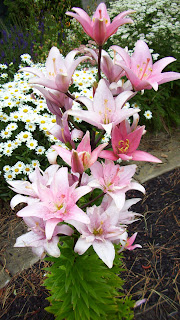

This week's Plant Of The Week is Sedum Autumn Joy (Sedum Herbstfreude) known commonly as Autumn Joy Stonecrop.
Autumn Joy is by far the most popular of the Stonecrops, most of which are a dependable choice for the late summer and autumn garden. Autumn Joy also provides good foliage interest earlier in the season. By mid-summer the plant has started to produce green, broccoli-like buds. These flower buds gradually open into creamy-ivory coloured blossoms which slowly change colour from cream to dusty pink, to cherry, to russet, then copper and finally to the dark mahogany of the seed heads which can be left on the plant to provide wonderful winter interest.
Autumn Joy is drought and heat tolerant.




























